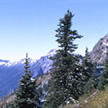| |
Report: Creation of Black Bear Dens in the Campbell River Watershed
| Report Documents
|
|
|
| |
| Map Plotfiles
|
-
No files of this type available
|
| |
| Data Files
|
-
No files of this type available
|
| |
| Digital Map Files
|
-
No files of this type available
|
| |
| Image Document
|
-
No files of this type available
|
| |
| Video Files
|
-
No files of this type available
|
| |
|
All Documents
|
|
|
| Contact
|
|
-
If you have any questions on the information presented, or require additional report data or attachments, please contact the Report Contact
|
|
|
The goal of this project is to enhance the supply of dens for black bears by installing artificial structures (e.g., culverts or molded dens) in areas dominated by second growth forests that may lack suitable natural den structures. A secondary objective is to mitigate losses of denning opportunities in the Campbell River Watershed by creating potential dens in existing old growth trees or large legacy stumps.
|
Author: H. Davis
|
Old Reference Number: FWCP Project - 16.W.CBR.02
|
|
Date Published: Jan 2015
|
Report ID: 50221
|
Audience: Government and Public
|
American black bears (Ursus americanus) require suitable winter den sites to provide security and cover to successfully survive the critical winter denning period. Female bears may utilize dens for up to 6 months (Davis 1996) and have additional energy costs associated with gestation, whelping, and nursing of cubs during this period (Lentz et al. 1983). Dens are reused intermittently over decades, if not longer, and are often used by successive bears (Davis et al. 2012). On Vancouver Island, winter dens used by black bears have only been found in or beneath large diameter (mean = 143 cm) trees or wooden structures derived from trees (i.e., logs, root boles and stumps; Davis 1996; Figure 1). It is likely that black bears do not use structures other than wooden ones in coastal British Columbia (BC) because of the cool and wet climate during the denning period, unlike other parts of North America where they may dig dens in the soil (Beecham et al. 1983) or den in nests on the ground (Martorello and Pelton 2003).
Current and historic land management activities in coastal forests have affected the supply of these critical element-level features. Most prominently, forest harvesting has removed many large trees that are needed to form den structures. Furthermore, the new crop of trees is not allowed to grow to sufficient size for replacement dens to develop in future forest rotations. Additionally, flooding of forested land for hydro-electric development removed trees from the potential den supply because reservoirs are in valley bottoms where forests are most productive and thus often where the largest trees grow. Despite the knowledge that these habitat features are critical to the over-winter survival of black bears, the BC government has not provided any regulatory protection for these critical structures. A reduction in the supply of suitable den sites may impact bear populations through predation on denned bears (Davis and Harestad 1996) and loss of condition of bears utilizing unsuitable dens. The net effect of this reduction in supply is that suitable den sites may become a factor that limits black bear populations.
|
Report Type
|
|
|
|
Warranty Disclaimer
This information is provided as a public service by the Government of British Columbia, Box 9411, Victoria, British Columbia, Canada V8W 9V1.
This Web site and all of the information it contains are provided "as is" without warranty of any kind, whether express or implied. All implied warranties, including, without limitation, implied warranties of merchantability, fitness for a particular purpose, and non-infringement, are hereby expressly disclaimed.
Limitation of Liabilities
Under no circumstances will the Government of British Columbia be liable to any person or business entity for any direct, indirect, special, incidental, consequential, or other damages based on any use of this Web site or any other Web site to which this site is linked, including, without limitation, any lost profits, business interruption, or loss of programs or information, even if the Government of British Columbia has been specifically advised of the possibility of such damages.
|
